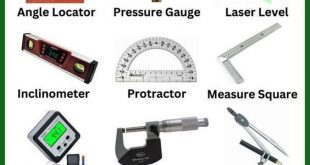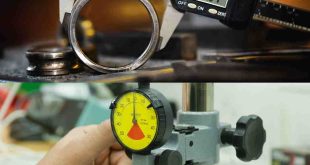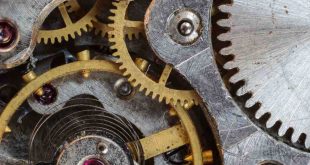Table of Contents
ToggleAdvanced Machining Processes
Introduction
Advanced machining processes represent a leap forward in the manufacturing and engineering industries. These processes utilize innovative techniques to achieve high precision, efficiency, and adaptability. Unlike traditional methods, advanced machining is capable of handling complex geometries, hard-to-machine materials, and exacting tolerances. This article explores the various categories of advanced machining processes, offering insights into their principles, applications, and advantages.
Material Removal Processes
Material removal processes are essential in shaping materials to achieve desired dimensions and surface finishes. These processes are categorized into conventional and non-conventional methods. Conventional methods involve mechanical interactions, such as cutting, grinding, and drilling, while non-conventional methods include advanced techniques like laser machining and electrochemical processes.
The main aim of material removal processes is to meet the growing demand for precision in industries such as aerospace, automotive, and medical device manufacturing. Non-conventional processes are increasingly popular due to their ability to handle complex geometries, hard materials, and minimal environmental impact.
Mechanical Processes
Mechanical machining processes rely on mechanical forces to remove material. This category includes abrasive machining, ultrasonic machining, and water jet machining.
Abrasive Machining: Abrasive particles like silicon carbide and aluminum oxide remove material by mechanical scraping. This method achieves excellent surface finishes and is commonly used for hard materials.
Ultrasonic Machining (USM): USM utilizes high-frequency vibrations and abrasive slurry to remove material from hard and brittle substances like ceramics and glass.
Water Jet Machining (WJM): High-pressure water streams, sometimes mixed with abrasives, cut through materials without generating heat, making it ideal for heat-sensitive applications.
Each of these processes offers unique advantages, such as precision, minimal thermal effects, and the ability to machine hard materials.
Chemical Processes
Chemical machining processes involve removing material through chemical reactions. These methods are used primarily for materials that are difficult to machine mechanically or when intricate designs are required.
Chemical Milling: This process selectively removes material using chemical etchants. It is widely used in aerospace industries for weight reduction in components.
Photochemical Machining (PCM): PCM uses photoresist layers and etchants to create intricate patterns. It is commonly applied in electronics for making circuit boards and micro-components.
Chemical processes are highly precise and suitable for thin materials, but they require careful handling of hazardous chemicals.
Electrochemical Processes
Electrochemical processes use electrolysis to remove material, offering high precision and surface quality. These methods are particularly effective for materials that are challenging to machine with traditional tools.
Electrochemical Machining (ECM): ECM uses a conductive tool and electrolyte solution to remove material without thermal damage. It is suitable for hard materials and intricate shapes.
Electrochemical Grinding (ECG): ECG combines electrochemical and abrasive actions to machine materials, offering high material removal rates and precision.
Electrochemical methods are widely used in medical device manufacturing, aerospace, and turbine industries.
Thermal Processes
Thermal processes involve the application of heat to remove material. These methods are effective for hard and brittle materials and offer high precision.
Laser Beam Machining (LBM): LBM uses focused laser beams to melt or vaporize material. It is ideal for precise cuts and engravings.
Plasma Arc Machining (PAM): PAM employs ionized gas to generate high temperatures for cutting and welding metals.
Electron Beam Machining (EBM): EBM utilizes a focused electron beam to remove material with exceptional precision. It is commonly used in microfabrication.
Thermal processes are known for their versatility and ability to machine hard materials, though they may introduce thermal stresses.
Hybrid Electrochemical Processes
Hybrid electrochemical processes combine electrochemical and mechanical actions to enhance machining efficiency and precision.
Electrochemical Discharge Machining (ECDM): ECDM integrates electrochemical and electrical discharge processes to machine non-conductive materials.
Electrochemical Spark Machining (ECSM): ECSM uses electrochemical reactions and spark discharge for material removal, offering precision in hard and brittle materials.
These hybrid techniques provide advantages like reduced tool wear, improved surface quality, and the ability to machine complex geometries.
Hybrid Thermal Processes
Hybrid thermal processes combine thermal energy with mechanical or other forms of energy to improve machining performance.
Laser-Assisted Machining (LAM): LAM uses laser heating to soften the material before mechanical cutting, reducing tool wear and enhancing surface finish.
Plasma-Assisted Cutting: This method combines plasma arc heating with mechanical cutting for efficient material removal.
Electron Beam-Assisted Processing: It enhances machining precision by integrating electron beam heating with traditional methods.
These processes are widely used in industries requiring high precision, such as aerospace and biomedical sectors.
Material Addition Processes
Material addition processes involve adding material layer by layer to create components. These methods are foundational in additive manufacturing and 3D printing technologies.
Selective Laser Sintering (SLS): SLS uses laser energy to sinter powdered material, creating components with high precision.
Electron Beam Melting (EBM): EBM employs an electron beam to melt and fuse powdered materials into solid parts.
Fused Deposition Modeling (FDM): FDM extrudes thermoplastic materials layer by layer to build objects.
Material addition processes offer design flexibility, reduced waste, and the ability to create complex geometries, making them ideal for rapid prototyping and custom manufacturing.
Conclusion
Advanced machining processes have revolutionized the manufacturing landscape, enabling precise and efficient production of complex components. From material removal to material addition, each category offers unique benefits tailored to specific industrial needs. These methods are critical in advancing sectors like aerospace, healthcare, and automotive, where precision and innovation are paramount. As technology continues to evolve, advanced machining processes will remain at the forefront of modern manufacturing, driving progress and enabling new possibilities.
 Boilersinfo Boiler and Mechanical Power Digital Library
Boilersinfo Boiler and Mechanical Power Digital Library


